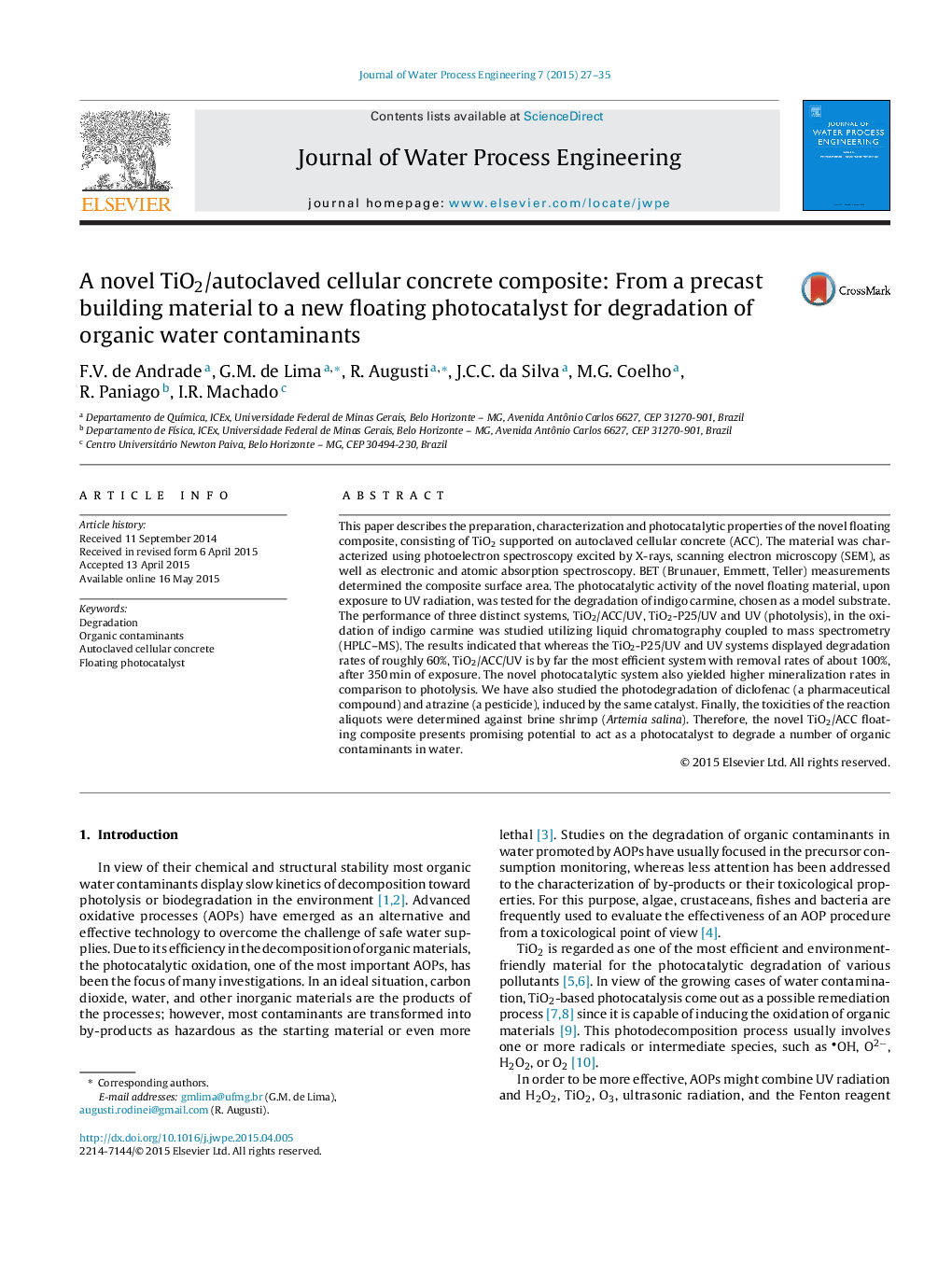| Article ID | Journal | Published Year | Pages | File Type |
|---|---|---|---|---|
| 232597 | Journal of Water Process Engineering | 2015 | 9 Pages |
This paper describes the preparation, characterization and photocatalytic properties of the novel floating composite, consisting of TiO2 supported on autoclaved cellular concrete (ACC). The material was characterized using photoelectron spectroscopy excited by X-rays, scanning electron microscopy (SEM), as well as electronic and atomic absorption spectroscopy. BET (Brunauer, Emmett, Teller) measurements determined the composite surface area. The photocatalytic activity of the novel floating material, upon exposure to UV radiation, was tested for the degradation of indigo carmine, chosen as a model substrate. The performance of three distinct systems, TiO2/ACC/UV, TiO2-P25/UV and UV (photolysis), in the oxidation of indigo carmine was studied utilizing liquid chromatography coupled to mass spectrometry (HPLC–MS). The results indicated that whereas the TiO2-P25/UV and UV systems displayed degradation rates of roughly 60%, TiO2/ACC/UV is by far the most efficient system with removal rates of about 100%, after 350 min of exposure. The novel photocatalytic system also yielded higher mineralization rates in comparison to photolysis. We have also studied the photodegradation of diclofenac (a pharmaceutical compound) and atrazine (a pesticide), induced by the same catalyst. Finally, the toxicities of the reaction aliquots were determined against brine shrimp (Artemia salina). Therefore, the novel TiO2/ACC floating composite presents promising potential to act as a photocatalyst to degrade a number of organic contaminants in water.
Graphical abstractFigure optionsDownload full-size imageDownload as PowerPoint slide
